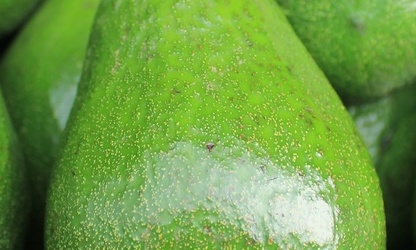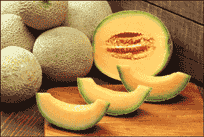

Voice of America
Phage Eyed as Agents To Control Foodborne Pathogens David Holzman, ASM News, October, 2003; David Holzman writes from Lexington, Mass.
A bacteriophage and the bacteriocin nisin effectively can control Listeria monocytogenes on contaminated melons and apples, at least under defined lab conditions, according to Britta Leverentz of the U.S. Department of Agriculture (USDA) and her collaborators, who report their findings in the August 2003 Applied and Environmental Microbiology (69:4519-4526). In another report in that same issue, P. A. Barrow of Compton Laboratory, Newbury, Berkshire, United Kingdom, and collaborators report that phage also can be effective in reducing the numbers of other foodborne pathogens, including Salmonella enterica serovar Enteritidis and Campylobacter jejuni, found on chicken skin (Appl. Environ. Microbiol. 69:5032-5036). L. monocytogenes, a foodborne pathogen, is fatal in approximately 20% of cases, and USDA policy prescribes zero tolerance for it on ready-to-eat foods. Although L. monocytogenes is commonly associated with meat, salad vegetables are also implicated in outbreaks caused by this pathogen. It is especially hazardous because it can grow on foods stored at 4°C. C. jejuni infections usually are self-limiting, and rarely fatal in healthy individuals, but this pathogen is considered the leading cause of bacterial diarrhea in the United States. Salmonella accounts for an estimated 800,000 to 4 million cases of food poisoning annually, and leads to hundreds of fatalities. Because S. enteritidis infections are attributed primarily to contaminated eggs, the Food and Drug Administration requires shell eggs that are not treated to kill Salmonella to be stored at 7.2°C or lower. Phage have several advantages over other means for decontaminating foods that carry microbial pathogens " a chief one being their specificity in killing a single bacterial species without upsetting the balance of those that remain, says Alexander Sulakvelidze of the University of Maryland, Baltimore, and Intralytix, Inc., a biotechnology company, who is collaborating with Leverentz at USDA. Phage use also avoids adding chemicals that might have other health effects (see ASM News, November, 1998, pages 620 and 622). Phage treatments reduce contamination by specific bacteria on fresh-cut fruit to an extent that is "greater than those achieved with aqueous chemical sanitizers or by washing with water," report Leverentz and her collaborators. "The phage-nisin combination was more effective than the nisin treatment alone, especially after longer storage periods." Treatments with phage alone or in combination with nisin reduce bacterial numbers on cut honeydew by more than four orders of magnitude after seven days of storage at 10°C. Treating cut apples reduces bacterial numbers by about two orders of magnitude. Adding nisin to the mix reduces the likelihood of bacteria developing resistance to such treatments, according to Leverentz and her collaborators. Nisin, which is produced by lactic acid bacteria, is an "approved preservative in 50 countries and the only purified bacteriocin that is commercially available." Moreover, although bacteria may eventually develop resistance to a particular phage, phage variants are so abundant that alternatives surely could be found. Researchers foresee a wide variety of additional applications in and outside the food industry for phage. They could be used to clean contaminated processing plants, Sulakvelidze says. "There are places where you cannot apply chemical sanitizers because it might get onto the food." Another possible application is for degrading biofilms on anything from simple inanimate surfaces to those found within the lungs of cystic fibrosis patients, he adds. "There have been limited studies showing that phage can degrade biofilms." One means for doing so involves a phage-encoded exopolysaccharide-degrading enzyme that might be used by itself or in combination with phage, he points out. "I think citrus canker is a very good candidate," says Joshua Lederberg of Rockefeller University in New York, N.Y., referring to yet another potential application for phage " in this case, to treat a rampant disease affecting citrus trees in Florida. "Quite a few pounds of gentimycin are being sprayed into the environment as an alternative."
Phages can control the growth of the foodborne pathogen Listeria monocytogenes on melons and apples. (USDA ARS photo.)








